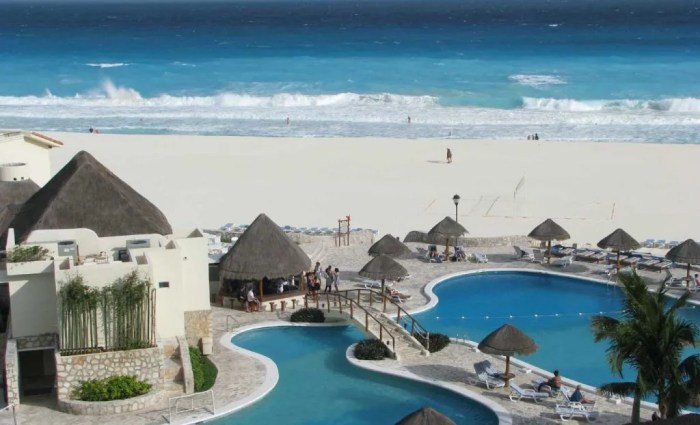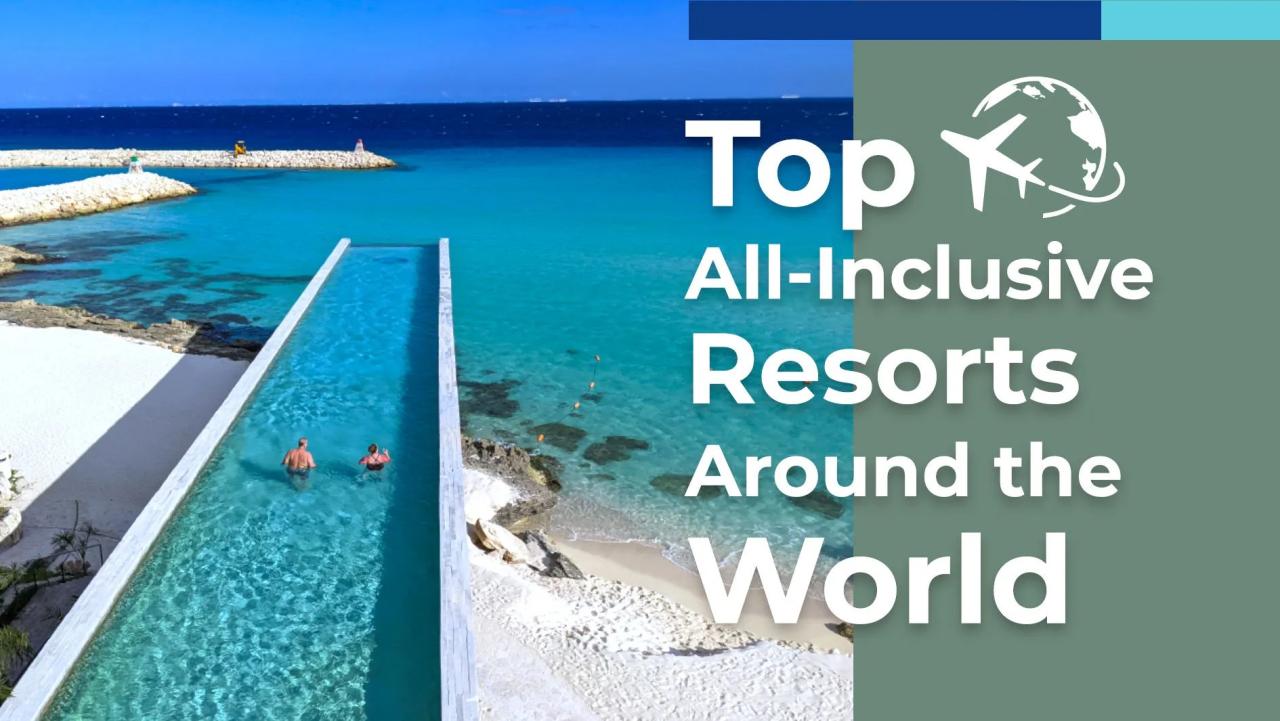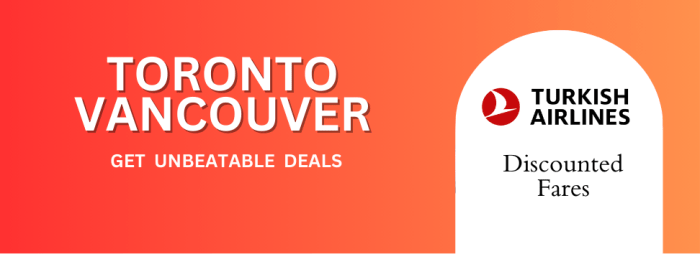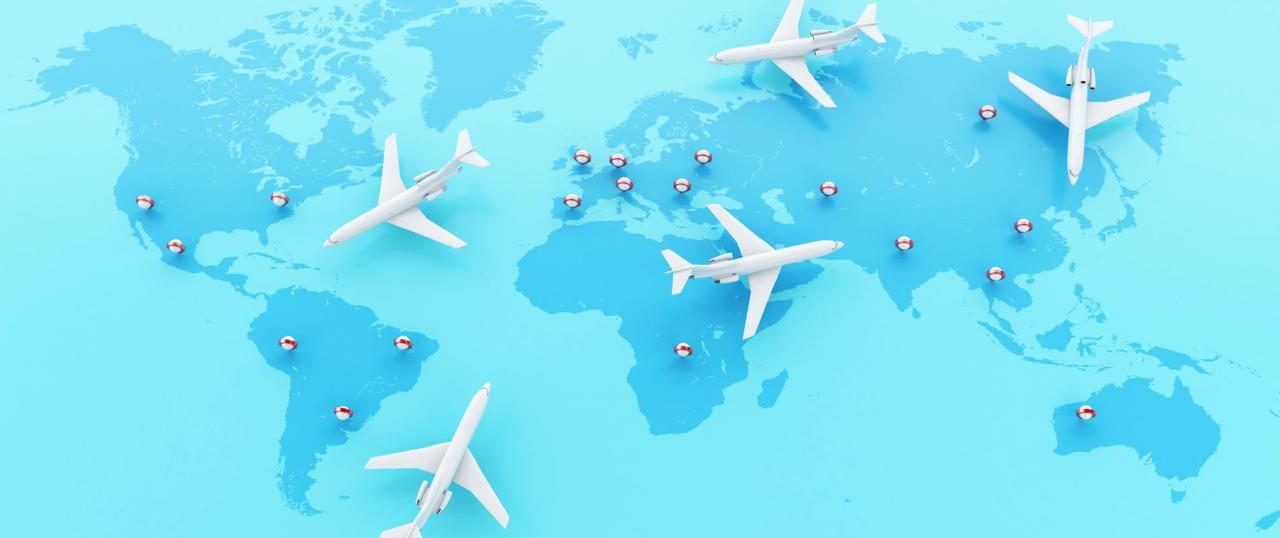How much is it to travel the world? This question sparks wanderlust in many, yet the answer is rarely straightforward. Global travel costs fluctuate wildly depending on your chosen style, duration, and destinations. From budget-friendly backpacking adventures to luxurious world tours, the expenses can vary significantly. This exploration will provide a comprehensive overview, from estimating costs to budgeting strategies and essential considerations.
This guide breaks down the factors impacting global travel expenses, allowing you to craft a personalized budget and plan. We’ll examine transportation costs, accommodation options, food choices, and activities to help you estimate the financial commitment required for your dream world trip.
Estimating Costs
Planning a global adventure requires meticulous cost analysis. Understanding the financial implications empowers travelers to set realistic budgets and make informed decisions about their journey. Thorough estimations, encompassing diverse travel styles and durations, are crucial for a smooth and enjoyable experience.Accurately assessing the financial aspects of a world trip allows travelers to avoid unforeseen financial strain and enjoy the experience without compromise.
Different budgets will influence the entire experience, from accommodation to dining, activities, and transportation.
Typical Expenses Breakdown
A comprehensive cost breakdown is essential for any world trip. Travelers should anticipate expenses across various categories, including transportation, accommodation, food, activities, and visa fees. The amount spent in each category will significantly vary depending on the chosen travel style and destinations.
- Transportation: Airfare, train tickets, bus fares, and potentially ferries or other modes of transport will make up a considerable portion of the budget. International flights, particularly during peak seasons, can be substantial. For example, round-trip flights from New York to Tokyo could range from $1,000 to $5,000 depending on the time of year and booking strategy.
- Accommodation: Hotels, hostels, guesthouses, and Airbnb rentals will influence the overall cost. Luxury accommodations, particularly in high-demand tourist destinations, can significantly impact the budget. Hostels, on the other hand, are a more economical option.
- Food: Dining expenses depend heavily on dietary preferences and the choice of restaurants. Eating at local eateries, compared to tourist traps, will usually be more affordable. Street food is often a budget-friendly option.
- Activities: Entrance fees for attractions, tours, and other activities contribute to the total cost. The budget for these activities will vary significantly depending on the interests of the traveler and the destinations visited. For example, exploring ancient ruins might have lower entrance fees than visiting a theme park.
- Visa Fees: Travelers must account for visa costs and processing fees for each country they intend to visit. These costs vary based on nationality and the specific visa requirements.
Impact of Travel Styles on Costs
Different travel styles lead to varying costs. The choice of budget, mid-range, or luxury travel significantly affects the financial implications of a global journey.
- Budget Travel: Budget travelers prioritize affordability, opting for hostels, local transportation, and home-cooked meals. This approach minimizes costs but may require more time and flexibility. A budget traveler may spend approximately $50-$100 per day on a world trip.
- Mid-Range Travel: Mid-range travelers enjoy a balance between affordability and comfort. They might choose mid-range hotels, local transportation, and occasionally dine at restaurants. They may spend approximately $100-$200 per day.
- Luxury Travel: Luxury travelers prioritize comfort and experience. They typically book five-star hotels, utilize private transportation, and dine at upscale restaurants. Their daily expenses can easily exceed $200.
Estimating Costs for Varying Trip Durations
The duration of a world trip directly impacts the overall cost. A longer trip will naturally lead to higher expenses.
- Shorter Trips: A shorter trip might limit the number of destinations visited and activities explored. Expenses are likely to be lower compared to longer journeys.
- Longer Trips: Extended trips offer more opportunities for exploration and immersion in different cultures, but they also necessitate a larger budget to cover accommodation, transportation, and activities across multiple locations.
Regional Cost Comparisons
Regional variations in costs significantly affect the overall budget for a world trip.
| Region | Estimated Daily Cost (USD) – Budget | Estimated Daily Cost (USD) – Mid-Range | Estimated Daily Cost (USD) – Luxury |
|---|---|---|---|
| Southeast Asia | $20-$50 | $50-$100 | $150-$300 |
| Europe | $50-$100 | $100-$200 | $250-$500 |
| South America | $30-$70 | $70-$150 | $200-$400 |
Cost-Saving Strategies
Implementing cost-saving strategies can significantly reduce the overall expense of a world trip.
| Expense Category | Cost-Saving Strategies |
|---|---|
| Transportation | Booking flights and accommodations in advance, utilizing budget airlines, and opting for public transportation |
| Accommodation | Staying in hostels, guesthouses, or Airbnb rentals, considering homestays, and choosing off-season travel |
| Food | Eating at local eateries, preparing some meals, utilizing grocery stores, and exploring street food |
| Activities | Taking advantage of free activities, visiting attractions during off-peak hours, and utilizing free walking tours |
| Visa Fees | Researching visa requirements and processing options, and potentially applying for e-visas |
Budgeting and Planning
Global travel, while enriching, demands meticulous planning. A well-defined budget and a realistic itinerary are essential for a smooth and fulfilling journey. Failing to account for fluctuating costs and unforeseen circumstances can lead to financial strain and compromise the experience. Strategic budgeting and meticulous planning lay the groundwork for a memorable and sustainable adventure.Effective budgeting isn’t just about allocating funds; it’s about understanding and controlling expenses, allowing for flexibility and adjustments along the way.
A comprehensive approach involves considering factors such as travel duration, desired experiences, and the level of comfort. This proactive approach will maximize the value of the journey and minimize potential issues.
Different Budgeting Methods for Global Travel
Different travel styles necessitate tailored budgeting approaches. A meticulous traveler might prefer detailed daily expense tracking, while an adventurous spirit might lean towards a more flexible, experience-driven budget. Several methods can be employed, each with its own advantages and disadvantages. These range from the simple to the sophisticated, catering to varying needs and preferences.
Estimating the cost of global travel is tricky, as it depends heavily on individual preferences and the chosen itinerary. Factors like lodging, transportation, and activities significantly impact the overall expense. For a deeper dive into planning and navigating the world of travel, consider resources like Travel , which can provide valuable insights into budgeting and route planning.
Ultimately, the cost of circumnavigating the globe can vary widely, from modest to extravagant, based on these decisions.
- Fixed Budget: This method involves allocating a specific amount of money for each category (accommodation, food, activities, etc.). It provides a clear framework, but it may be inflexible if unexpected expenses arise. For example, a traveler may set aside $50 per day for food, but unforeseen culinary experiences could exceed this amount.
- Variable Budget: This approach allows for adjustments based on actual spending and changing circumstances. It’s more adaptable, but requires careful monitoring to ensure the overall budget isn’t exceeded. This is often favored by those seeking spontaneous adventures or unforeseen opportunities.
- Zero-Based Budget: This method allocates every dollar to a specific expense, ensuring that all income is accounted for. It helps identify potential areas for saving and provides a complete picture of financial health. This method is particularly useful for long-term travel planning, allowing for more accurate predictions of expenses.
Creating a Realistic Budget for a World Trip
Developing a realistic budget involves a thorough assessment of anticipated expenses. Consider all aspects of the journey, from transportation to accommodation, food, and activities. This should be a proactive, calculated approach, not a reactive one.
- Estimate Costs: Accurately determine the cost of flights, accommodation, activities, and other potential expenses. Research different options for various destinations, considering varying levels of luxury and convenience.
- Calculate Daily Expenses: Estimate average daily costs for each category based on your travel style and desired experiences. Be realistic about expenses, accounting for both anticipated and unforeseen costs.
- Factor in Exchange Rates: Understand how exchange rates can affect your budget, especially if traveling to multiple countries with fluctuating currency values. Use online converters or currency exchange calculators to get a clearer idea of how these factors will impact your overall cost.
- Build in a Contingency Fund: Allocate a portion of the budget for unexpected expenses, such as medical emergencies or lost belongings. Having a cushion is vital for maintaining financial stability during travel.
Strategies for Saving Money for an Extended Journey
Saving for an extended trip requires a dedicated approach. Develop strategies that encourage consistent savings and avoid impulsive spending.
- Create a Savings Plan: Establish a specific savings goal and a timeframe for achieving it. Set aside a portion of income regularly to build the necessary funds for travel.
- Reduce Expenses: Identify areas where expenses can be cut without sacrificing essential needs. This could include reducing entertainment costs, cutting down on dining out, or using public transportation instead of taxis.
- Seek Extra Income Streams: Explore opportunities for generating additional income, such as freelance work, selling unused items, or taking on part-time jobs. This can accelerate the savings process.
- Negotiate Prices: Don’t hesitate to negotiate prices for flights, accommodation, and tours. A little effort can save significant amounts of money.
Methods for Tracking Expenses During Travel
Tracking expenses during travel is crucial for maintaining budget control. Use methods that allow for easy recording and analysis.
- Expense Tracking Apps: Utilize dedicated travel expense tracking apps for easy recording and categorization of expenses. These apps often provide valuable insights into spending patterns.
- Digital Spreadsheets: Create a spreadsheet to log daily expenses, categorizing them for a clear overview of spending. This allows for easy data analysis and comparison.
- Manual Notebooks: Maintain a travel journal to document expenses, experiences, and observations. This offers a tangible record of the journey and its associated costs.
A Step-by-Step Guide for Developing a Comprehensive Travel Plan
A comprehensive travel plan is essential for a smooth and fulfilling journey. A detailed approach ensures that every aspect of the trip is well-organized.
- Define Destinations: Identify the regions or countries you want to visit, considering factors like interests, budget, and visa requirements.
- Research Destinations: Gather information about local customs, transportation options, and potential activities.
- Book Accommodation: Secure accommodation reservations in advance, especially during peak seasons. Consider a mix of budget-friendly options and luxury experiences to cater to different needs.
- Plan Transportation: Arrange transportation between destinations, considering factors such as cost-effectiveness and convenience. Use public transportation whenever possible to minimize expenses.
- Create a Detailed Itinerary: Artikel a schedule that incorporates desired activities and experiences. Leave room for flexibility and spontaneity.
Transportation Costs
Global travel often hinges on choosing the right mode of transport. The cost of airfare, train tickets, or bus fares can significantly impact the overall budget, often exceeding accommodation expenses. Understanding the nuances of each mode and how factors like seasonality and route selection influence costs is crucial for effective travel planning.The cost of transportation is a major component of any global travel budget.
Different modes of transport offer varying levels of comfort, speed, and accessibility, each with a distinct price point. Understanding these cost differences and the factors that affect them allows travelers to make informed decisions and optimize their spending.
Comparing Transportation Modes
Various transportation methods offer distinct advantages and disadvantages. Air travel, while often the fastest, can be the most expensive option, particularly for long-haul flights. Train travel often provides a more scenic and comfortable experience, though it might take longer and be more expensive than bus travel for longer distances. Buses, on the other hand, are typically the most budget-friendly option, but they often require more time.
Ferries are an excellent choice for island hopping or coastal journeys.
Factors Influencing Transportation Costs
Several variables impact transportation costs. Seasonality plays a significant role; travel during peak seasons, like holiday periods or summer months, usually results in higher fares. The specific route also influences costs, with longer distances and less-traveled routes typically commanding higher prices. The class of travel (economy, business, first-class) directly affects costs, with premium classes typically incurring substantially higher fees.
Obtaining Travel Documents
Travel documents are essential for international travel. Visas, passports, and other necessary permits have associated costs. Researching visa requirements well in advance and applying for them early is crucial to avoid unexpected delays and potential overruns in your travel budget. Costs vary considerably based on nationality and destination. Passport renewal fees and visa application costs should be factored into your overall travel budget.
Researching and Booking in Advance
Booking transportation in advance is a strategic way to save money. Websites and travel agencies often offer discounted fares for early bookings. Monitoring fares, using flight comparison websites, and looking for potential deals can lead to significant savings. Airlines and transportation providers frequently offer promotional fares, and savvy travelers capitalize on these opportunities.
Sample Route Cost Comparison
The following table provides a hypothetical comparison of transportation costs for a trip from London to Tokyo.
| Transportation Mode | Estimated Cost (USD) | Duration (Days) | Comments |
|---|---|---|---|
| Economy Class Flight | 1,200 | 12 | Includes two layovers. |
| Business Class Flight | 2,500 | 12 | Offers more comfort and faster travel. |
| High-Speed Rail (London to Paris) + Flight (Paris to Tokyo) | 1,800 | 14 | Potentially more convenient than a single flight. |
| Bus (London to Paris) + Bus (Paris to Tokyo) | 800 | 21 | Budget-friendly but time-consuming. |
This table illustrates the significant difference in cost between various transportation options. The estimated costs are for illustrative purposes only and can vary depending on specific booking dates, time of year, and other factors.
Accommodation Costs
Global travel, while exciting, demands careful budgeting. Accommodation costs can significantly impact the overall expense of a trip, often exceeding transportation. Understanding the range of options and associated pricing is crucial for creating a realistic budget. Factors like location, amenities, and the type of accommodation itself greatly influence the final cost.Careful consideration of accommodation costs is essential to managing overall travel expenses.
This involves comparing different options and understanding how they vary across destinations. The following sections delve into the specifics of accommodation costs, allowing for a more informed and effective travel planning process.
Accommodation Options and Costs
Accommodation options vary widely, from budget-friendly hostels to luxurious hotels. Understanding the pricing and amenities of each category is key to making an informed decision. Hostels are ideal for budget travelers, offering shared rooms and communal spaces. Guesthouses provide a more private experience, often with a local feel and potentially lower costs than hotels. Hotels offer a range of options from basic to upscale, with amenities varying significantly and impacting price.
While the cost of global travel varies dramatically, exploring the world often requires careful budgeting. Fortunately, fantastic nature walking trails are readily available near you, offering a budget-friendly alternative to international journeys while still providing immersive experiences. Discover local gems like nature walking trails near me to connect with nature without breaking the bank. Ultimately, traveling the world, whether near or far, hinges on thoughtful planning and realistic expectations.
Airbnb presents a unique opportunity for personalized lodging, often with unique experiences and varying prices.
Regional Variations in Accommodation Costs
Accommodation costs fluctuate significantly across regions. Western European cities typically have higher costs compared to Southeast Asian countries. Luxury hotels in major metropolitan areas often command premium prices, while budget-friendly options can be found in less-populated areas or off-season periods. Consider researching specific locations to get a sense of the average cost in the region you’re interested in.
Impact of Location and Amenities on Costs
Location significantly impacts accommodation costs. Hotels in central areas of major cities often have higher prices compared to those further from the city center. Amenities also play a role, with hotels featuring pools, spas, or other amenities generally costing more. Similarly, rooms with kitchen facilities or balconies can also influence the final price.
Finding Affordable Accommodation Options
Various strategies can help travelers find affordable accommodation options. Booking in advance, particularly during peak season, often allows for better deals. Considering alternative accommodation options like hostels or guesthouses can significantly reduce costs. Checking for discounts and promotions from travel websites or booking platforms is another key strategy. Utilizing travel apps or websites that specialize in finding deals on accommodation can also be effective.
Average Accommodation Costs by Region
| Region | Hostel (USD/night) | Guesthouse (USD/night) | Hotel (USD/night) | Airbnb (USD/night) |
|---|---|---|---|---|
| Southeast Asia (e.g., Thailand, Vietnam) | 10-30 | 20-60 | 30-150 | 20-100 |
| Western Europe (e.g., France, Germany) | 25-75 | 40-120 | 80-300 | 50-200 |
| North America (e.g., USA, Canada) | 30-80 | 50-150 | 100-400 | 50-250 |
| South America (e.g., Brazil, Peru) | 15-50 | 30-100 | 50-200 | 30-150 |
Note: These are average costs and can vary significantly depending on specific locations, seasonality, and amenities.
Food and Activities
Global travel presents a diverse culinary landscape, from bustling street food markets to fine-dining experiences. Understanding the varying costs of sustenance and activities is crucial for effective budgeting. This section details the substantial differences in food prices worldwide and provides strategies for managing food costs while traveling, along with a comparison of different dining options and affordable activities in various locations.
Food Cost Variations
Food costs fluctuate dramatically across countries. In developing nations, meals can be significantly cheaper than in developed economies. For instance, a simple street food meal in Southeast Asia might cost a fraction of the price of a comparable restaurant meal in Europe. This variance is due to factors including local wages, ingredient costs, and government regulations.
Budgeting for Food Expenses
Developing a food budget is essential for managing overall travel costs. Strategies include focusing on local markets for fresh produce and affordable options, such as street food, which often offers a taste of local cuisine at significantly lower prices. Cooking some meals in your accommodation can also drastically reduce food expenses, especially if you have access to a kitchen.
Also, consider using meal-planning apps to help you estimate and track your food costs.
Dining Options Comparison
Different dining options offer varying price points. Street food is generally the most affordable, providing a vibrant cultural experience. Restaurants offer a wider selection of cuisines but carry higher prices. Cafes offer a more relaxed setting and are often mid-range in cost, ideal for light meals and snacks.
Affordable Activities
Experiencing local culture without breaking the bank is possible. Consider visiting local parks, museums with free admission days, or participating in free walking tours, which often provide insights into the history and culture of a city. Many cities offer free events, concerts, or festivals throughout the year.
Attraction and Tour Costs
Attraction entry fees and tour costs vary considerably. For example, a popular historical site in Europe might charge a substantial entrance fee, whereas a similar site in a developing country could be free or offer a significantly lower cost. Always check websites or local tourist information centers for up-to-date pricing and special offers. Additionally, consider purchasing multi-attraction passes if visiting several sites in one location to potentially save money.
For instance, a city pass could grant entry to multiple museums and attractions at a discounted price.
Visa Requirements and Costs

Source: lifelisted.com
Global travel necessitates careful consideration of visa regulations. Navigating these requirements can significantly impact the overall cost and timeline of a trip. Understanding visa policies, application procedures, and associated fees is crucial for a smooth and successful journey. Thorough preparation minimizes potential delays and ensures a positive travel experience.Visa requirements vary drastically by country, nationality, and the purpose of travel.
The process for obtaining a visa can be complex, involving multiple steps, documentation, and potentially significant costs. These costs are not always apparent upfront and can add substantially to the overall budget.
Visa Requirements by Nationality
Visa requirements are contingent on the nationality of the traveler and the destination country. Citizens of certain nations may require a visa for short-term stays or even transit, while others may be exempt. These requirements are dynamic and subject to change. Therefore, constant monitoring and diligent research are vital.
- For US citizens traveling to the Schengen Area, a visa may not be necessary for short stays, typically under 90 days. However, specific criteria, such as the purpose of travel and duration of stay, must be met.
- Conversely, citizens of some Asian nations might require a visa for nearly every country they visit. The process for acquiring a visa for these countries often includes multiple applications and may demand specific documents.
- Nationalities with strong diplomatic ties or reciprocal agreements may enjoy more favorable visa terms.
Visa Application Costs
The cost of visa applications encompasses several elements. Application fees, processing fees, and potential costs for courier services and travel to the embassy or consulate can all contribute to the total expense.
- Visa application fees vary significantly by country. Some nations charge a fixed fee, while others base the cost on the type of visa or the duration of stay.
- Processing times can vary considerably. Expedite options are often available, but they typically involve additional fees.
- Always check the specific requirements of the embassy or consulate in the destination country to ensure you gather all necessary documentation and understand the fee structure.
Visa Application Procedures
The procedures for obtaining visas are standardized but vary in detail. Generally, the process includes gathering required documents, completing application forms, and submitting them to the relevant authorities.
- Documentation typically includes passports, photographs, proof of financial resources, and supporting documents related to the purpose of travel. Thorough preparation of documentation is critical.
- Completing the application form accurately and submitting it on time are crucial for smooth processing. Careless errors can cause delays and potentially affect approval.
- Consider using a travel agent or specialized service for assistance, but this may incur additional costs. The complexity of visa applications often necessitates guidance, especially for unfamiliar procedures.
Importance of Understanding Visa Regulations
Understanding visa regulations before embarking on a trip is essential to avoid unforeseen issues and delays. It’s crucial to ensure compliance with all applicable rules and regulations.
- Improper documentation or non-compliance with visa requirements can result in denial of entry, which can significantly disrupt travel plans.
- Being well-informed about the visa process allows for adequate preparation, minimizing stress and potential financial setbacks. Preemptive action can avoid unnecessary costs and time wastage.
Average Visa Costs Table
The table below provides a general overview of average visa costs for various countries. Keep in mind that these are estimations and can vary based on individual circumstances.
| Country | Estimated Visa Cost (USD) |
|---|---|
| United States | 160 |
| Canada | 100 |
| France | 80 |
| Japan | 120 |
| Australia | 180 |
Insurance and Emergencies
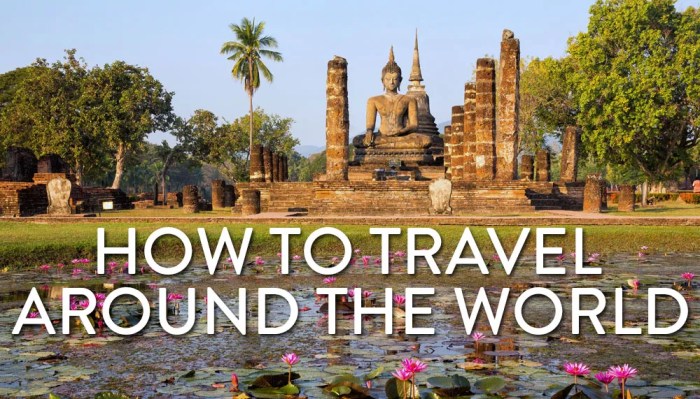
Source: pcdn.co
Protecting yourself during a global adventure goes beyond meticulous budgeting and meticulous planning. Unexpected events, from minor illnesses to major medical crises, can derail even the most carefully crafted itinerary. Robust travel insurance and proactive emergency preparedness are essential for a safe and enjoyable journey.Comprehensive travel insurance isn’t just about financial protection; it’s a peace of mind that allows you to fully immerse yourself in your travel experience.
Knowing that you’re covered for medical emergencies, lost luggage, trip cancellations, and other unforeseen circumstances can significantly reduce stress and enhance your overall travel experience.
Travel Insurance Costs and Coverage
Travel insurance premiums vary significantly depending on several factors. These factors include the destination, the duration of the trip, the traveler’s age and health, the type of coverage desired, and the specific features of the policy. A basic policy might cover medical expenses and trip cancellations, while more comprehensive plans include baggage protection, emergency evacuation, and even personal liability coverage.
Factors like pre-existing conditions, adventure activities, and specific medical needs can impact the cost and availability of coverage. Consider comparing quotes from different providers to find the best value for your specific needs.
Emergency Preparedness, How much is it to travel the world
A crucial aspect of global travel is proactive emergency preparedness. This involves more than just purchasing travel insurance. It includes researching potential health risks in your destination, packing necessary medications, and understanding local healthcare systems. Acclimatizing to the environment and understanding potential local issues, like water quality, can significantly reduce the risk of health problems.
Medical Emergencies While Traveling
Medical emergencies can occur unexpectedly anywhere in the world. Pre-trip medical preparations are vital for a smooth experience. This involves carrying necessary medications, having copies of medical records, and understanding the local healthcare system. Familiarizing yourself with the local emergency services numbers and understanding the potential costs associated with healthcare abroad is also crucial. Research local hospitals and clinics in your destination, noting their facilities and specialties.
While the cost of global travel varies widely, exploring the world doesn’t necessitate a multi-million-dollar budget. Finding incredible nearby trails like those listed in nice trails near me can offer a taste of adventure without breaking the bank. This can be a great way to experience the world while keeping expenses manageable and accessible.
Emergency Contacts and Resources
Maintaining a comprehensive list of emergency contacts and resources is critical. This includes contact information for your travel insurance provider, embassy or consulate representatives, and emergency services in your destination. This information, coupled with a detailed itinerary and travel documents, can prove invaluable in a crisis. Consider sharing this information with a trusted friend or family member who is not traveling with you.
| Category | Contact/Resource |
|---|---|
| Travel Insurance | Policy details and contact number |
| Embassy/Consulate | Specific location details, including contact information |
| Local Emergency Services | Emergency services number for the destination |
| Emergency Medical Services | Details of medical facilities and their contact information |
| Family/Friends | Contact information for a trusted person back home |
Currency Exchange and Costs
Navigating global travel often involves converting currencies, a process with associated costs and complexities. Understanding these nuances is crucial for effective budgeting and a smoother travel experience. This section details the methods, costs, and best practices for handling currency exchange.Effective currency management is essential for minimizing financial surprises and maximizing your travel budget. Choosing the right exchange method and understanding the associated fees can significantly impact your overall trip cost.
Figuring out the true cost of global travel often involves more than just airfare. Exploring local hiking parks near you, like hiking parks near me , can offer affordable adventures that help you experience a different world while keeping expenses down. Ultimately, the cost of truly traveling the world depends on your priorities and willingness to adapt your budget.
This section details the various approaches to currency exchange, highlighting both advantages and disadvantages.
Methods for Exchanging Currency
Pre-trip exchange provides a known rate, while in-country exchange offers flexibility. Choosing the best method depends on factors like travel duration and planned spending.
- Pre-Trip Exchange: Banks, credit unions, and dedicated currency exchange services offer exchange rates well in advance. This method offers certainty, but it may not be optimal for significant changes in exchange rates throughout the trip. The exchange rate is often quoted as a “mid-market rate” or “spot rate” and reflects the current market value. For example, a traveler planning a trip to Europe might exchange USD for Euros before departure to lock in an exchange rate.
This approach is advantageous for travelers who prefer a fixed cost and have a clear estimate of their spending.
- In-Country Exchange: Foreign exchange bureaus, banks, and ATMs offer exchange options during travel. This method provides greater flexibility in response to unforeseen circumstances. However, exchange rates at these locations are usually less favorable than those obtained pre-trip. For instance, travelers might need to exchange currency in a local market or withdraw cash from an ATM to make purchases during their trip.
Costs Associated with Currency Exchange
Currency exchange fees can vary widely based on the method and provider. Understanding these fees is crucial for budgeting accurately.
- Commission Fees: Many providers charge a commission fee on top of the exchange rate. This fee is often a percentage of the exchanged amount. For example, a 2% commission on a USD 1,000 exchange to Euros would result in a fee of USD 20.
- Spread: The difference between the buying and selling rates represents the spread. This is the profit margin of the exchange service. This cost is built into the exchange rate and can be significant for large transactions. For example, a bank might offer a buy rate of 1.00 USD to 0.85 EUR and a sell rate of 1.00 USD to 0.84 EUR.
The spread is 0.01 EUR, which is the bank’s profit margin.
- Transaction Fees: Some providers charge additional fees for the transaction, such as bank transfer fees. This should be considered as part of the overall cost.
Choosing the Best Exchange Rate for Travelers
Comparing exchange rates across different providers is crucial to maximizing your funds. Consider transaction fees, spreads, and commissions to find the most favorable deal.
- Comparison Shopping: Use online tools or compare quotes from different providers before making a decision. This is a key strategy for securing the best possible rate.
- Consider the exchange rate offered by your bank or credit union: Banks often offer currency exchange services to their customers. It’s worth checking the rates offered by your institution. For instance, a customer of a particular bank might find a favorable rate compared to other options.
- Understand the exchange rate trends: Keep an eye on the market trends and exchange rates before your trip. This will help you make an informed decision about the best time to exchange currency. Real-time exchange rate tracking can be helpful in making such decisions.
Reputable Currency Exchange Services
Selecting a reliable provider is vital to avoid potential scams and minimize losses.
- Major Banks: Established banks often provide reliable currency exchange services. However, rates might not always be the most competitive. Consider your relationship with the bank and the specific services they offer.
- Currency Exchange Bureaus: Dedicated currency exchange bureaus often provide competitive rates, but they might have higher fees. Evaluate their fees and services carefully.
- Online Exchange Platforms: Several online platforms offer currency exchange services. These platforms usually provide transparent pricing and comparison tools.
Currency Exchange Rate Comparison Table
A table showcasing the exchange rates from different providers can help you make an informed decision.
| Provider | Buy Rate (USD/EUR) | Sell Rate (USD/EUR) | Commission |
|---|---|---|---|
| Bank A | 0.95 | 0.93 | 2% |
| Bank B | 0.94 | 0.92 | 1.5% |
| Exchange Bureau C | 0.96 | 0.94 | 1% |
Final Summary: How Much Is It To Travel The World

Source: amazonaws.com
In conclusion, planning a world trip requires careful consideration of various factors impacting the overall cost. By understanding the expenses associated with transportation, accommodation, food, activities, and visa fees, you can effectively budget and plan for your global adventure. Remember to prioritize your travel style and research thoroughly to maximize your experience while staying within your financial means.
This guide aims to equip you with the knowledge to navigate the complexities of global travel budgeting, allowing you to embark on your journey with confidence and a well-defined plan.
Q&A
How much does a month-long trip around Southeast Asia cost on a budget?
A month-long budget trip to Southeast Asia can range from $800 to $1500, depending on your specific choices of accommodation, food, and activities. This estimate is based on mid-range options and does not include flights to and from the region.
What are some essential travel documents needed for international travel?
Essential documents include a valid passport, visa(s) if required, and travel insurance information. Always check specific requirements for each country you plan to visit.
How can I track my travel expenses effectively?
Utilize a budgeting app, spreadsheet, or notebook to meticulously record your daily expenses. Categorize costs to gain a clear picture of your spending patterns.
What are the advantages of booking accommodations in advance?
Booking in advance often provides better deals and more options, especially during peak seasons. It can also help secure your preferred accommodations and avoid last-minute surprises.
